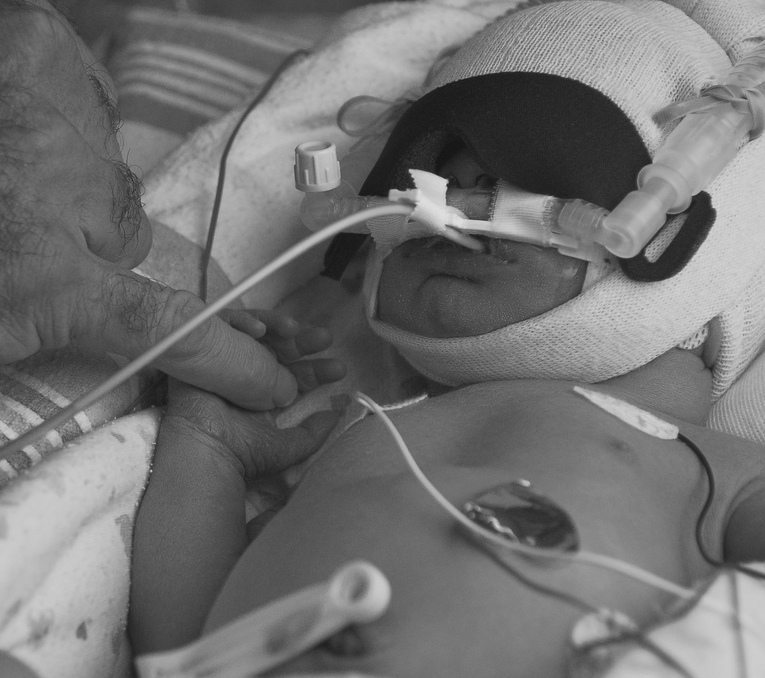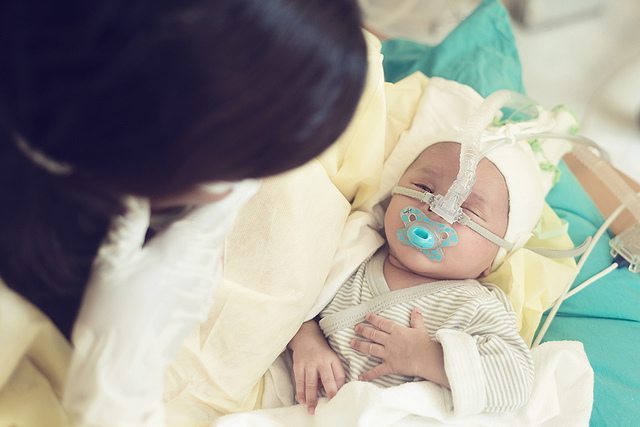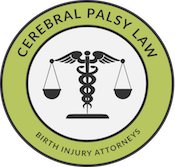Cerebral Palsy Attorneys in Livonia, Michigan
Children with cerebral palsy are often forced to endure major medical, social, emotional, and physical challenges–at Michigan Cerebral Palsy Attorneys, our Livonia cerebral palsy lawyers understand how beneficial financial compensation from a medical malpractice lawsuit can be to a child recovering from a birth injury. In this section, we’ll discuss what cerebral palsy is, what types of medical errors result in cerebral palsy and birth injury, and what legal options are available to you and your loved one.
Cerebral palsy (CP) is a grouping of neurological impairments affecting the brain and nervous system. CP is caused by damage to a child or infant’s developing brain, usually around the time of birth. People with cerebral palsy typically experience trouble with coordination, balance, gait, reflexes, control, muscle tone and posture, but other side effects include seizures and epilepsy, learning disabilities, swallowing and communication disorders, and mental deficiencies. Although cerebral palsy is non-life threatening and non-progressive, there is no cure for the condition. Rather, most patients participate in comprehensive treatment and therapy programs that blend different procedures, exercises, and activities together to restore physical, mental, and emotional well-being.
If you believe your loved one’s cerebral palsy resulted from medical malpractice, our Livonia cerebral palsy lawyers encourage you to reach out for legal help and advice. Michigan Cerebral Palsy Attorneys has decades of specific experience handling cerebral palsy and birth injury cases from Livonia hospitals and medical facilities. To receive a free legal consultation fill out our contact form or call the skilled Livonia cerebral palsy lawyers from our birth injury law firm at (888) 592-1857.
Cerebral Palsy in Livonia, Michigan
Livonia Cerebral Palsy Lawyers Discuss Medical Malpractice and Birth Injury
 An upsetting number of birth injuries and cerebral palsy cases are the result of medical malpractice and negligence on the part of nurses, midwives, physicians, surgeons, or other medical professionals. In this section, we’ll discuss some of the conditions associated with pregnancy and delivery that, when mismanaged or misdiagnosed, often lead to birth injury, cerebral palsy, infant brain damage, and lifelong disabilities. To read our complete list of cerebral palsy causes and risk factors, visit this webpage.
An upsetting number of birth injuries and cerebral palsy cases are the result of medical malpractice and negligence on the part of nurses, midwives, physicians, surgeons, or other medical professionals. In this section, we’ll discuss some of the conditions associated with pregnancy and delivery that, when mismanaged or misdiagnosed, often lead to birth injury, cerebral palsy, infant brain damage, and lifelong disabilities. To read our complete list of cerebral palsy causes and risk factors, visit this webpage.
- Nuchal Cord: A nuchal cord occurs when the umbilical cord wraps around the baby’s neck in a 360 degree loop. Nuchal cords are a major cause hypoxic ischemic encephalopathy, since ischemia (limited fetal blood flow) and hypoxia (diminished flow of oxygen) occur when cord entanglement restricts the flow of oxygenated blood through the neck artery, causes blood flow congestion, or causes cord compression. Nuchal cords also can cause umbilical cord prolapse (umbilical cord enters birth canal before the baby), vasa previa (the cord blood vessels cross the cervix under the baby and tear, resulting in limited oxygen flow), and decreased fetal development.
- Preterm and Post Term Deliveries: Premature births or post-term births are typically very high-risk. Premature babies are thirty times likelier to develop cerebral palsy than full term babies because their underdeveloped organs cannot withstand the rough means of preterm delivery and labor. Post-term babies are often too large (macrosomic) to easily fit through the mother’s birth canal and pelvic region because of cephalopelvic disproportion (CPD). The placenta also begins to diminish in pregnancies that extend beyond 37 weeks, so post-term babies tend to receive reduced levels of oxygen, blood, and nutrients and risk developing HIE, brain damage, and cerebral palsy.
- Hypoxic Ischemic Encephalopathy (HIE; birth asphyxia): HIE is a form of brain injury that occurs when a baby receives an inadequate amount of oxygen around the time of birth. Extended asphyxia destroys brain tissues and results in injuries including cerebral palsy, seizures and epilepsy, motor function impairments, cognitive deficiencies and learning disabilities, neurodevelopmental impairments, and even death. HIE can result from many mishandled medical conditions, some of which include delayed emergency C-section, uterine rupture, placental abruption, nuchal cords and umbilical cord prolapse and compression, preeclampsia, post-term pregnancy, premature rupture of membranes (PROM), and many others.
- Delayed C-Section: The failure to quickly order and perform a C-section during prolonged, distressed, or complicated deliveries commonly results in cerebral palsy. It is the standard of care for medical professionals to be prepared for emergency C-sections in all pregnancies, particularly those in which risk factors are present.
- Intracranial Hemorrhages: An intracranial hemorrhage, also known as a brain bleed, is a brain injury in which bleeding in the brain or skull damages the parts of the brain responsible for controlling physical development and movement. Intracranial hemorrhages are often the result of birth trauma, which can occur from abnormal size and positioning (macrosomia, cephalopelvic disproportion, breech presentation, face presentation, and related conditions), prolonged labor, the incorrect use of labor assistance tools (vacuum extractors and forceps), hypoxic ischemic encephalopathy, premature birth, and more. Brian bleeds often result in ischemia, cerebral palsy, seizure disorders and epilepsy, mental and physical impairments, and even death.
 Fetal Monitoring Problems: Failure to properly detect fetal distress is a common cause of cerebral palsy, brain injury, hypoxic ischemic encephalopathy, and lifelong disability. Medical professionals are obligated to monitor both the baby during labor and delivery to detect elevated fetal heart rates, oxygen issues, and other distress signals.
Fetal Monitoring Problems: Failure to properly detect fetal distress is a common cause of cerebral palsy, brain injury, hypoxic ischemic encephalopathy, and lifelong disability. Medical professionals are obligated to monitor both the baby during labor and delivery to detect elevated fetal heart rates, oxygen issues, and other distress signals.- Maternal Health: Undiagnosed or untreated maternal health conditions, including preeclampsia (pregnancy-induced high blood pressure) and infection, easily compromise the health of the baby.
- Periventricular Leukomalacia (PVL): Like hypoxic ischemic encephalopathy (HIE), PVL is a form of brain injury caused by fetal oxygen deprivation around the time of birth. Periventricular leukomalacia is the damage and softening of the brain’s white matter, which are the areas of the brain responsible for communicating information between the spinal cord and nerve cells. Nearly all babies with PVL later develop cerebral palsy. Periventricular leukomalacia is often the result of untreated low blood pressure, hypoxemia (oxygen deficiency in the blood), infections, hypocarbia (decreased carbon dioxide in a baby’s blood), and acidosis (high acidity in the blood of a fetus, caused by prolonged periods without oxygen).
Cerebral Palsy: Signs, Symptoms, and Diagnosis
Diagnosing cerebral palsy is different for every child. Because the signs, symptoms, side effects, and causes vary, some children receive cerebral palsy diagnoses immediately after birth while others receive diagnoses several years later. Early detection is crucial for optimal rehabilitation, so specialists prioritize early testing and diagnosis. In order to speed up the process of diagnosis, we’ve listed some of the common signs and symptoms of cerebral palsy. Family members, friends, educators, sitters, and medical professionals should be on the lookout for the following signs and symptoms:
- Seizure activity or epilepsy
- Gait abnormalities: lopsided crawling, imbalance, abnormal gait or scissor gait
- Coordination and control impairments: tremors, spasticities, spasms, involuntary movements, or difficulty grasping objects
- Retention of the common primitive reflexes
- Joint or bone deformities (like scoliosis)
- Poor muscle tone; weakness
- Developmental delays or failure to reach developmental milestones
- Impairments of the senses (vision and hearing in particular)
Legal Help for Cerebral Palsy and Birth Injury
Livonia Cerebral Palsy Lawyers
Michigan Cerebral Palsy Attorneys has decades of specific experience offering legal help to the families emotionally and financially burdened by birth injuries in Livonia and around Michigan. If your loved one’s cerebral palsy resulted from a mishandled diagnosis or from another negligent medical handling of a birth injury, we’re here to help. Call our Livonia cerebral palsy lawyers today at (888) 592-1857 or fill out our contact form and a legal expert from our birth injury law firm will answer your legal questions for free.
To learn more about the wealth of cerebral palsy resources available in Livonia, please visit our Livonia & Redford Cerebral Palsy Resources page.
